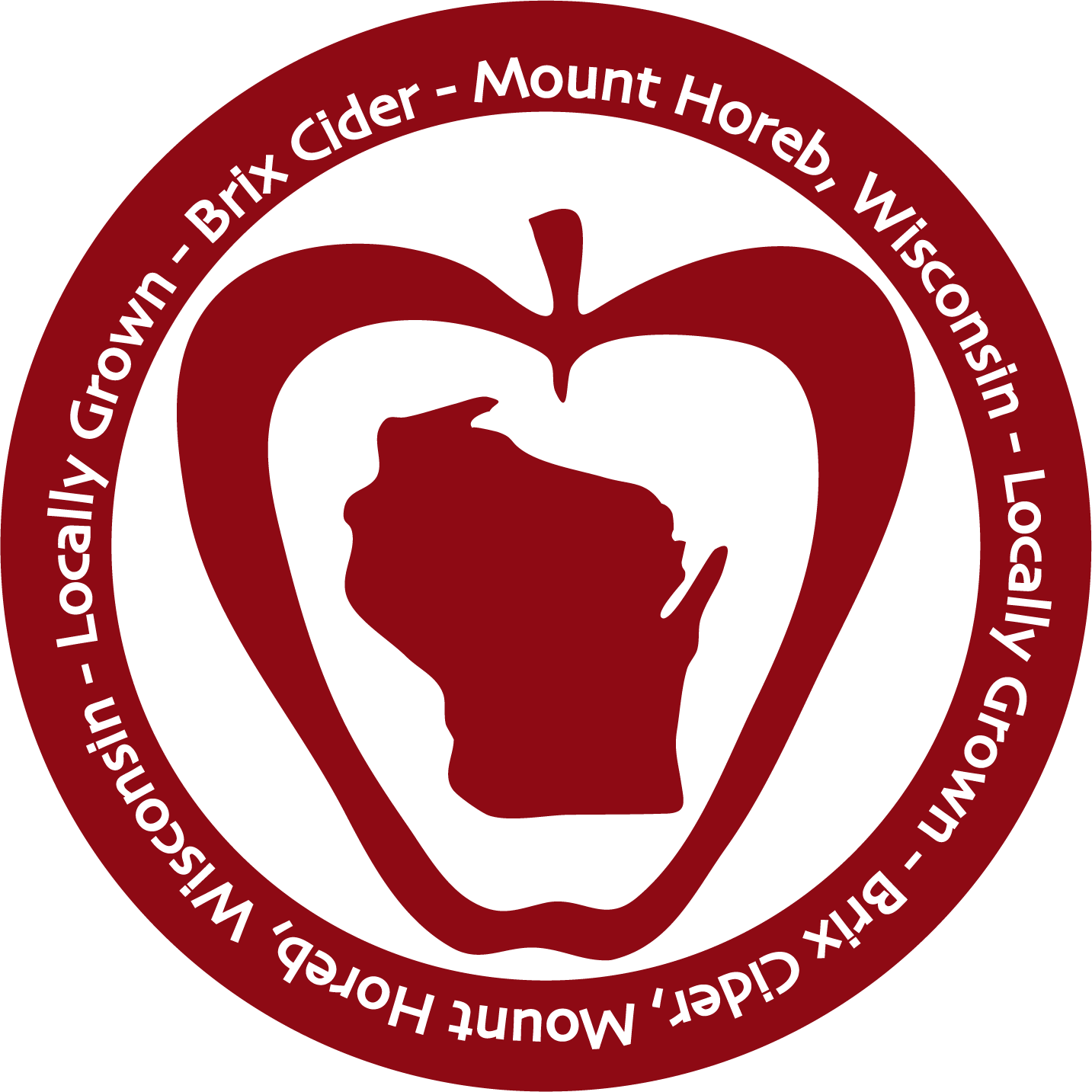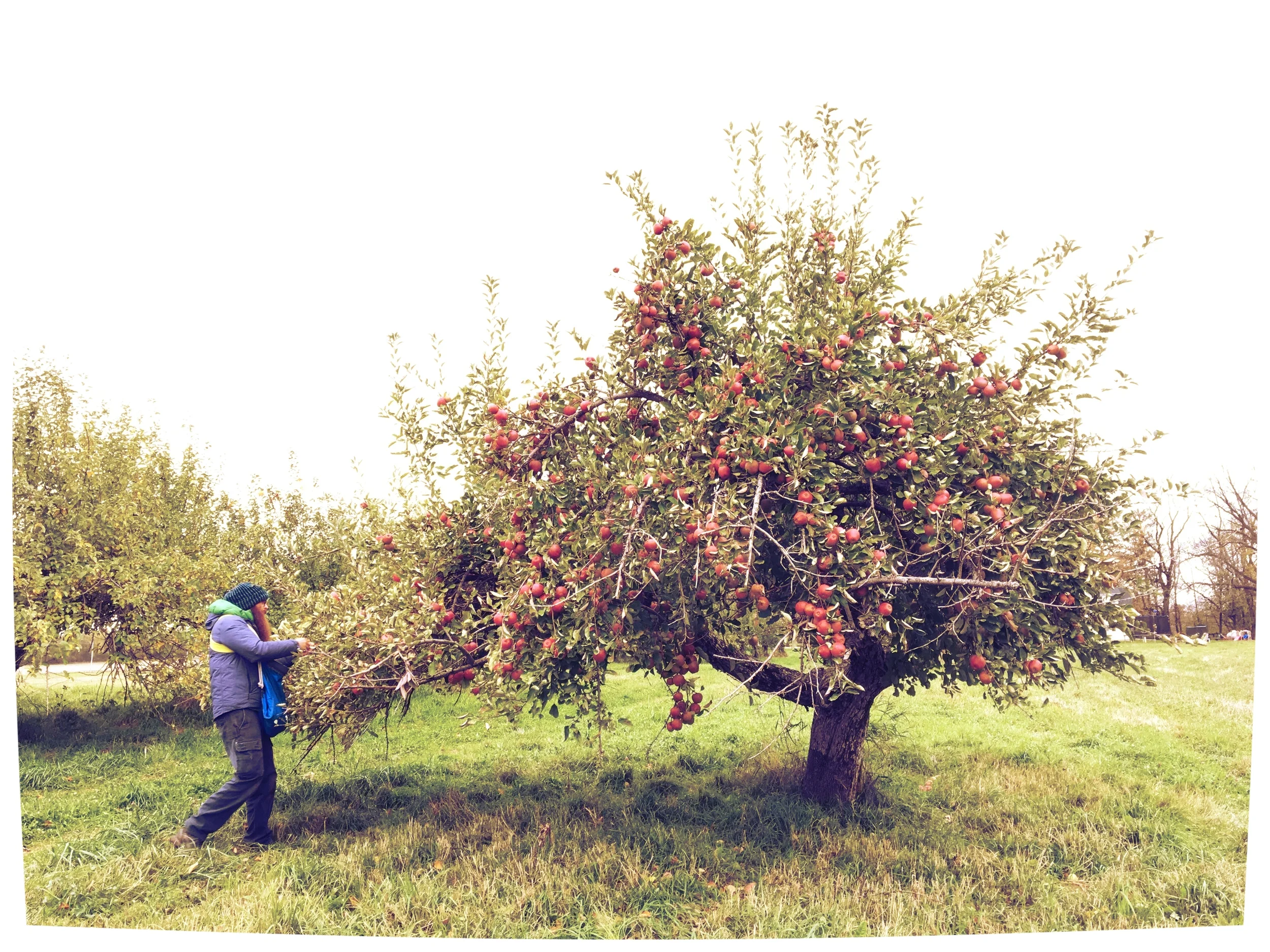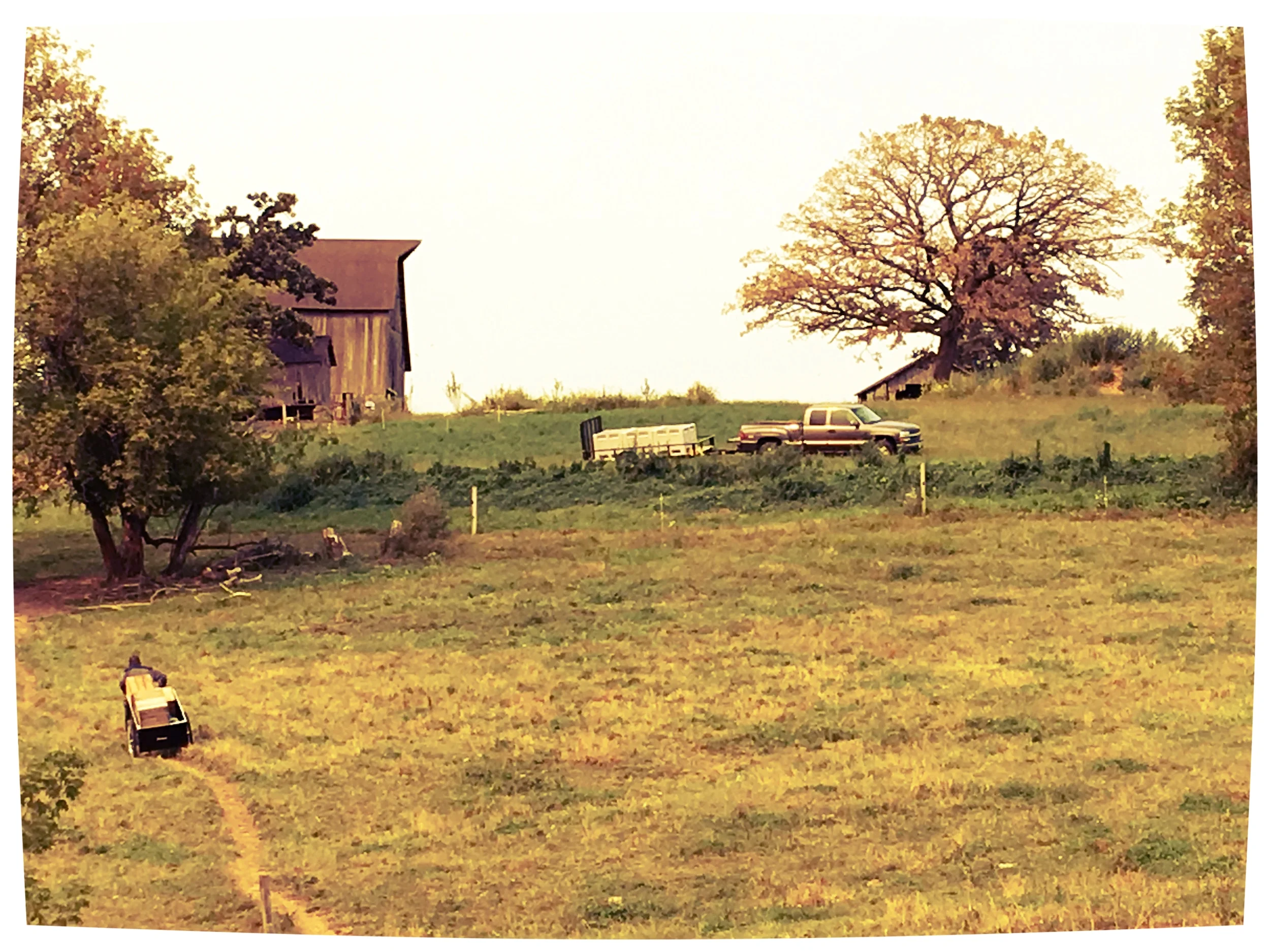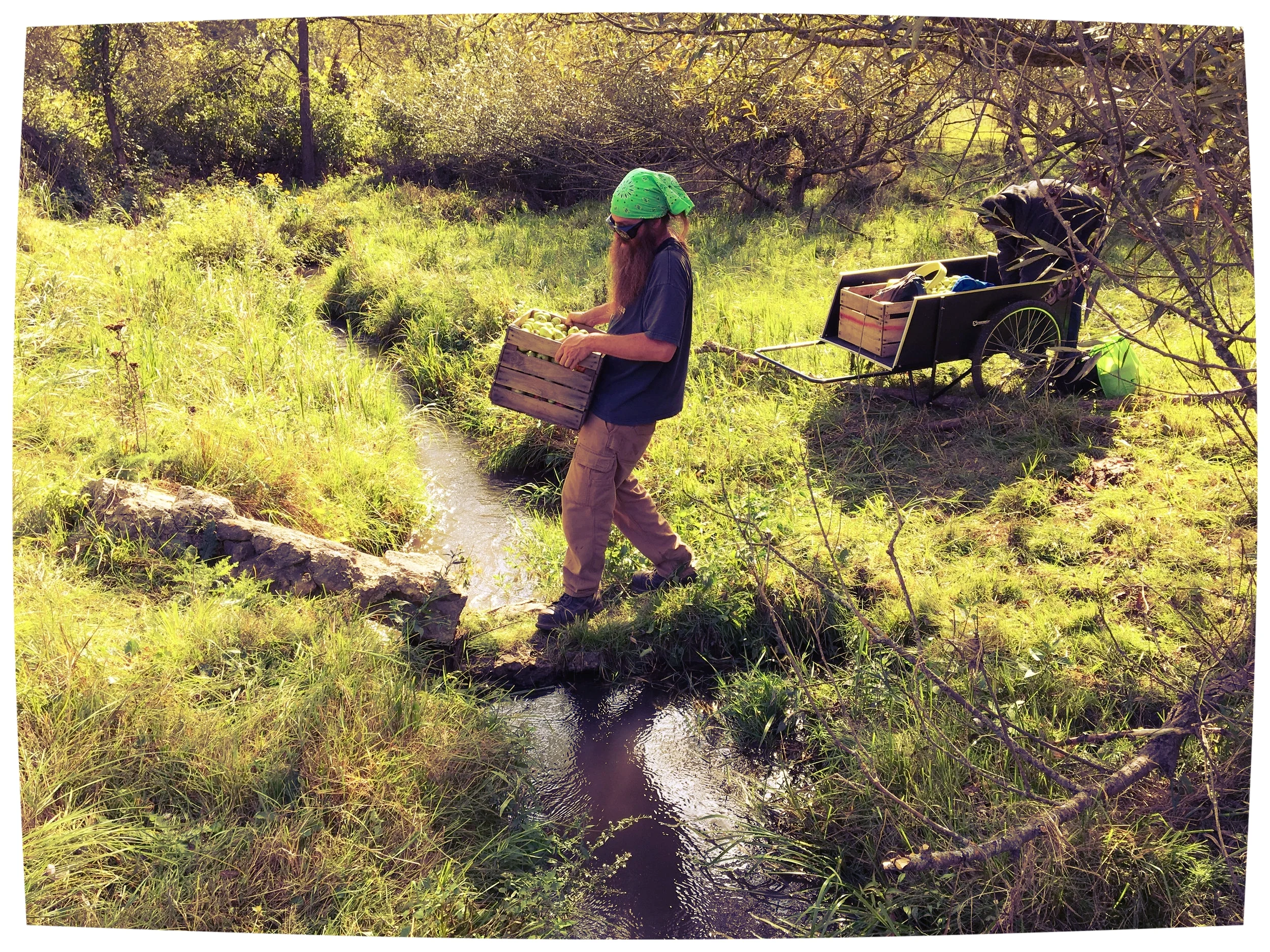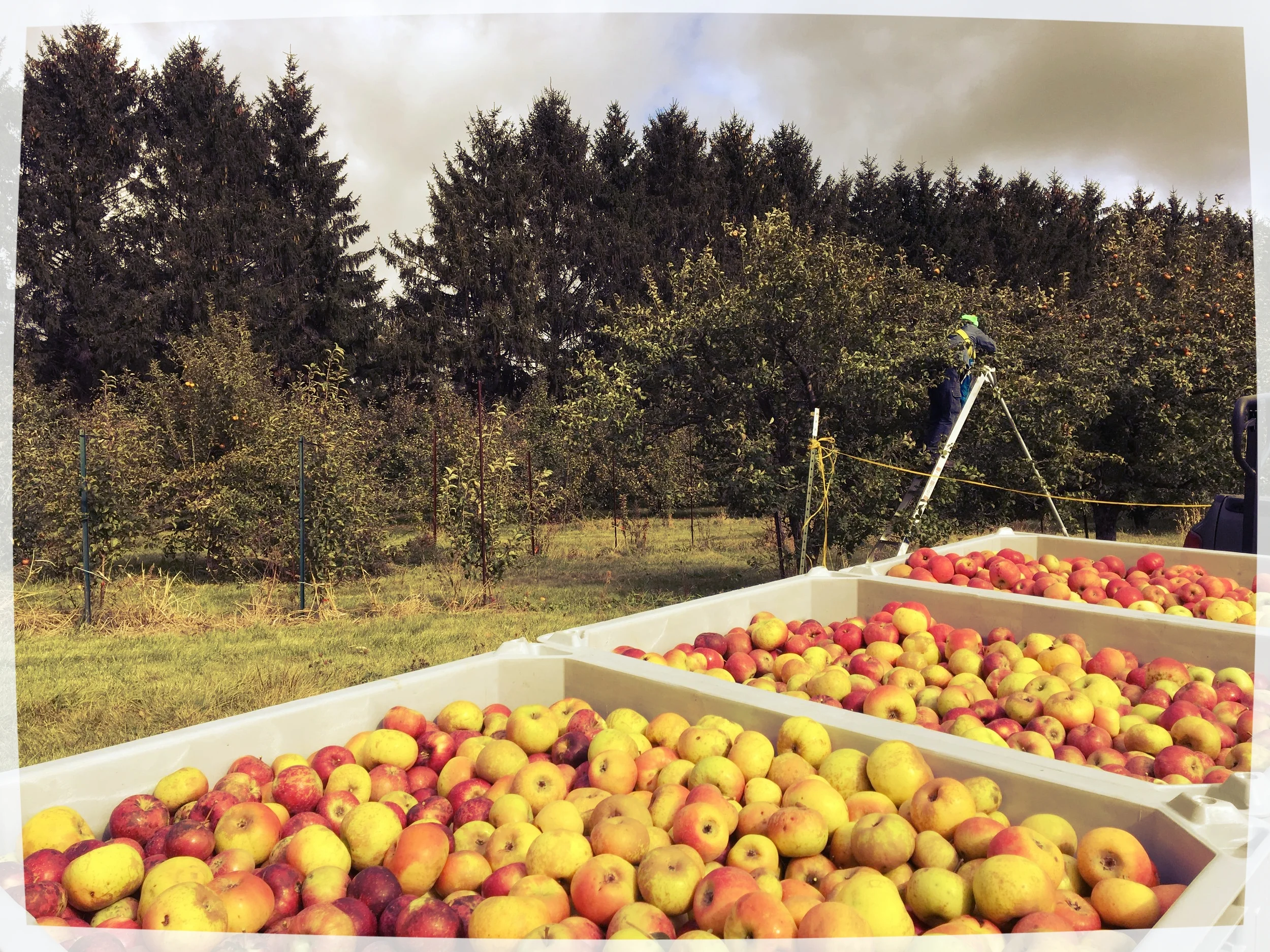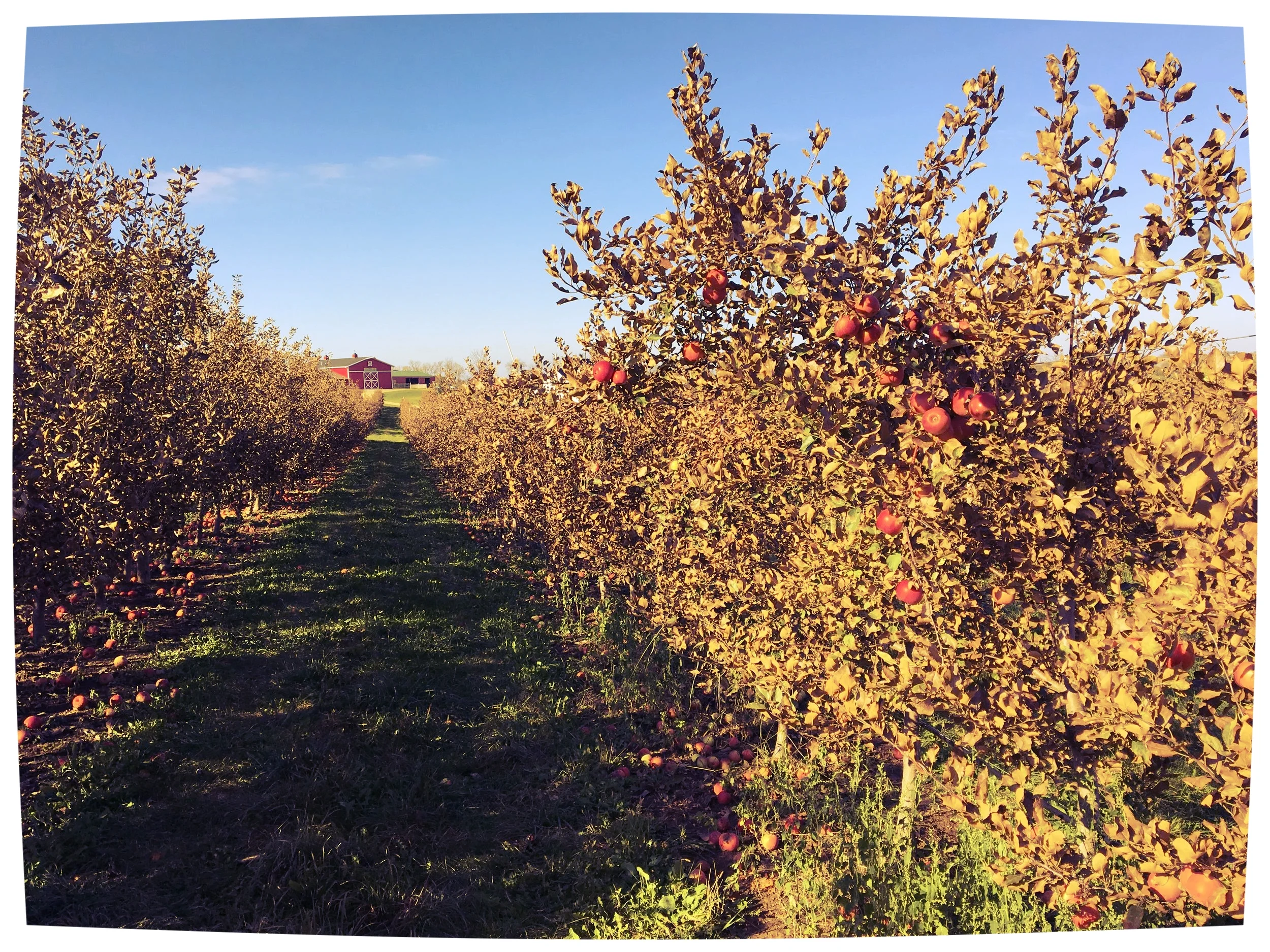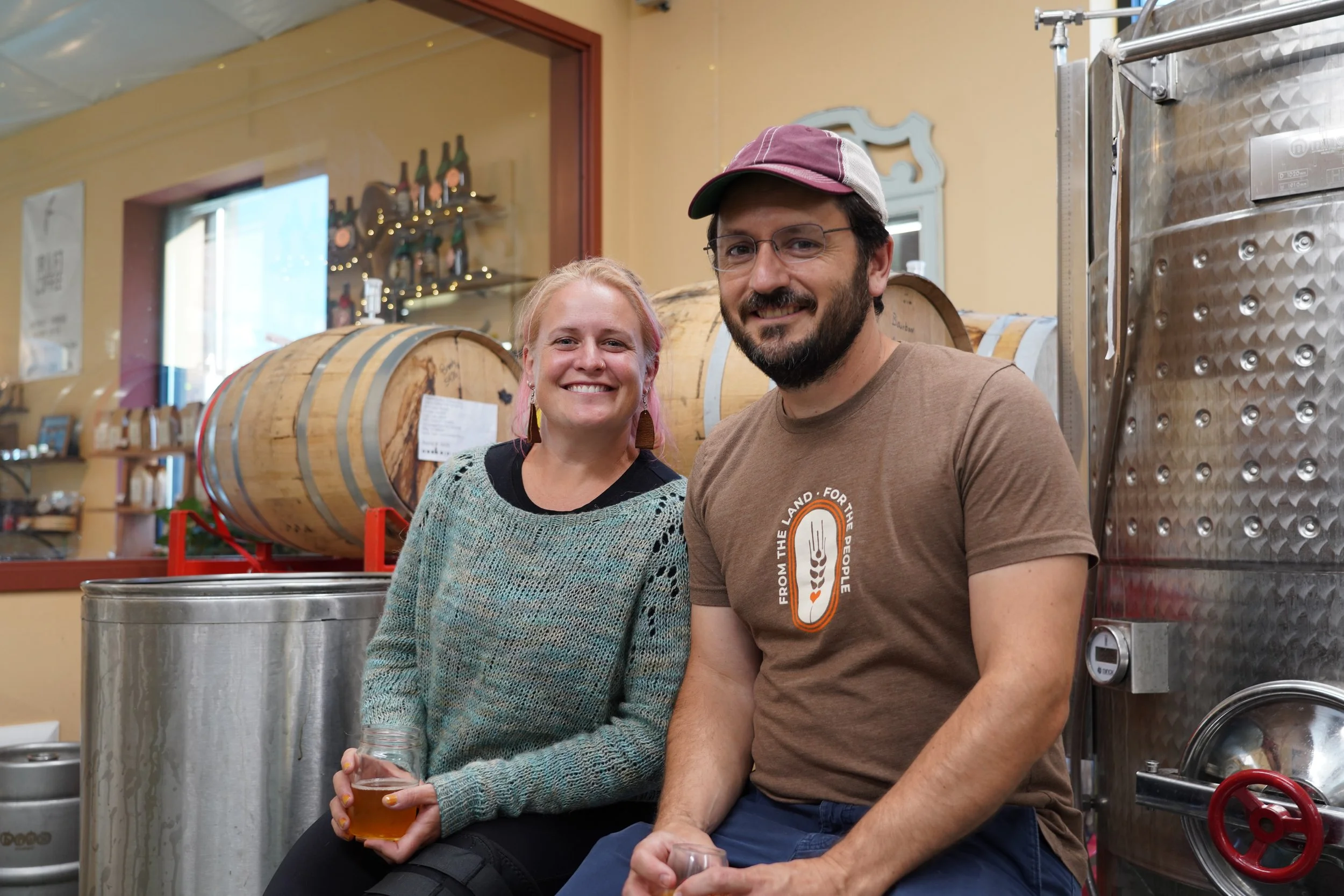Sourcing Wisconsin Apples
Wisconsin may not produce the volume of apples that Washington does, but we do have a lot of orchards - over 1,000 of them! And from what we have seen, these orchards are like snowflakes; no two are alike. At some orchards, hardy old trees still bear fruit generations after they were planted. At other orchards, neat rows of dwarf trees bear fruit just three years after they were put in the ground. Some orchards are carefully managed while others are nearly abandoned.
Above: Bergere picking fruit from a Forest Winter apple tree planted in the 1930s.
One thing that most Wisconsin orchards do have in common, is that they're small. About half are less than 1 acre, and over 75 percent of them are less than 5 acres.
To start a cider business, we knew we would need A LOT of apples. Just in this startup year, we projected that we would need 1,500 bushels. It followed that we would need to source our apples from a lot of orchards.
Being new at this, we weren't sure what to expect. How would we know how many apples we could get from each orchard? How much could we buy? How much could we pick ourselves? How would we catch different apple varieties when they are ripe? What blends of apples could we make from week to week through the season? What would our product portfolio look like when we're sourcing diverse apples from diverse locations?
Above: Occasionally we had a long trek between the apple trees and the truck
We started with mostly wild trees, which can be the hardest to get, but we wanted to catch them before too many of them dropped. We hauled apples up and down hills and over streams. We battled brush and brambles. We balanced precariously on tall ladders amidst tangles of branches. Wherever the apples were, we went.
Above: There isn't alway a road to wild apples. Sometimes you have to go off the beaten path.
As the fall progressed, we found more and more actual orchards where we could pick apples. Some days the apples were plentiful. Other days were a struggle. We improvised, and we found ways to fill our bins from week to week.
By the end of the fall (yesterday), we picked apples at 12 different orchards, and we bought pre-picked apples from 3 orchards. In total, we picked over 1,000 bushels, and before winter is done, we will have bought about 400 bushels of pre-picked apples - pretty darn close to our 1500 bushel goal.
Above: Marie and her Wolf River baby apple
One important lesson we learned is that the apple business is unpredictable. Growers are constantly improvising to try to make the best of the weather and to get what they can out of the year's apple crop. The best we could do was to try to get to know the growers and to improvise along with them.
Above: Nearly full bins of apples
We think you're going to like the results of our work. Each cider we pressed had unique qualities, and rather than trying to make one consistent product, we are making a wide variety of ciders that reflect the diversity of the apples and farms in Wisconsin. We enjoyed many beautiful fall days, and we tasted many delicious apples. We hope that our ciders capture those fall days and flavors, and we look forward to sharing them with you.
Above: End of the harvest. The last of the apples hanging on the trees at Munchkey Apples.
